Palmitoyl Tripeptide-1
- CAS NO.:147732-56-7
- Empirical Formula: C30H54N6O5
- Molecular Weight: 578.79
- MDL number: MFCD18251733
- EINECS: 000-000-0
- Update Date: 2025-12-17 09:50:07
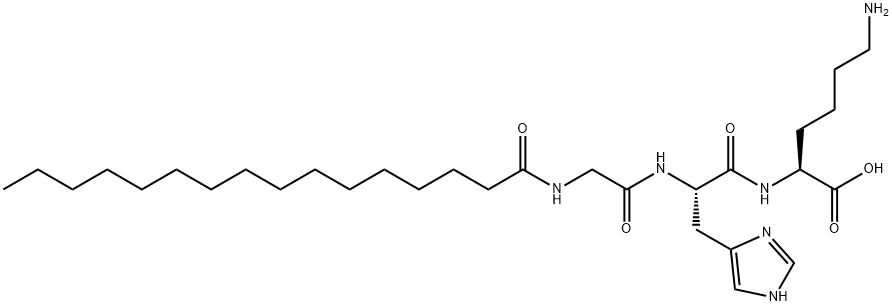
What is Palmitoyl Tripeptide-1?
Description
A peptide is two or more amino acids joined together and is the building block of protein. Peptides fall into three main categories: signal peptides, carrier peptides, and those that inhibit nerve signals. Signal peptides, like palmitoyl tripeptide-1, act as messengers to cells, which trigger collagen synthesis, which then increases skin firmness.Palmitoyl tripeptide-1 is a small three amino acid signal peptide with the amino sequence of glycine-histidine-lysine (GHK). GHK is attached to palmitic acid (a fatty acid) to increase its skin penetration and oil solubility.
Description
Pal-GHK is a form of the extracellular matrix-derived peptide GHK containing palmitic acid , which allows it to penetrate the stratum corneum to the epidermal and dermal skin layers. Pal-GHK (0.5 μM) increases collagen synthesis in human skin fibroblasts in vitro. It reduces collagen degradation ex vivo in patient-derived human skin samples irradiated with UVA light when used at a concentration of 6 ppm. It has been used with the zwitterionic surfactant C12 dodecyldimethylamine oxide (C12DMAO) to study self-assembly of the mixture into aggregates, ribbons, and nanobelts. Pal-GHK has also been used as an internal standard for the quantification of pal-KTTKS in anti-wrinkle creams by LC-MS/MS.
The Uses of Palmitoyl Tripeptide-1
Palmitoyl Tripeptide-1, has shown to have effects on on collagen, fibronectin, hyaluronic acid synthesis in human dermal fibroblasts, and thus can be used in preparation of antiaging cosmetic creams.
What are the applications of Application
Palmitoyl Tripeptide-1 (Pal-GHK, SpecPed? PT1P) is useful in anti-aging products and wrinkle treatment products such as gels, serums, lotions and creams. Acting as messengers of cutaneous restructuration and repair, this peptide works synergistically to restore and maintain the skin's youthful appearance.
Clinical Use
Applying palmitoyl tripeptide-1 directly to your skin tells the cells to make more collagen, stimulating new collagen production. It requires at least one month or more to begin to see visible changes from new collagen with maximum results visible after 3 to 4 months. Erin Gilbert, MD, FAAD, Ph.D., and board-certified dermatologist and neuroscientist, continues: "Peptides can be included in serums, moisturizers, and masks," Gilbert explains. "They are also included in some topical serums used after micro-needling or superficial laser procedures to increase the penetration of the peptide and help the skin recover from the procedure."
Safety
The CIR Expert Panel concluded that peptides, such as palmitoyl tripeptide-1, are safe in cosmetics and self-care products. Environmental Working Group (EWG) currently scores palmitoyl tripeptide-1 as “1” or “low hazard.”Overall, peptides, such as palmitoyl tripeptide-1, mimic what already exists in the human body and research on peptides’ impact on the skin shows limited to no skin irritation. In terms of toxicity caused by peptides, there is no published research to document any known toxicity.
Properties of Palmitoyl Tripeptide-1
| Boiling point: | 913.0±65.0 °C(Predicted) |
| Density | 1.105 |
| storage temp. | Store at -20°C |
| solubility | DMF: 30 mg/ml; DMSO: 10 mg/ml; Ethanol: 30 mg/ml |
| form | A solid |
| pka | 3.16±0.10(Predicted) |
Safety information for Palmitoyl Tripeptide-1
| Signal word | Warning |
| Pictogram(s) |
 Exclamation Mark Irritant GHS07 |
| GHS Hazard Statements |
H302:Acute toxicity,oral H315:Skin corrosion/irritation H319:Serious eye damage/eye irritation H335:Specific target organ toxicity, single exposure;Respiratory tract irritation |
| Precautionary Statement Codes |
P261:Avoid breathing dust/fume/gas/mist/vapours/spray. P305+P351+P338:IF IN EYES: Rinse cautiously with water for several minutes. Remove contact lenses, if present and easy to do. Continuerinsing. |
Computed Descriptors for Palmitoyl Tripeptide-1
| InChIKey | BYUQATUKPXLFLZ-UIOOFZCWSA-N |
| SMILES | C(O)(=O)[C@H](CCCCN)NC(=O)[C@H](CC1N=CNC=1)NC(=O)CNC(=O)CCCCCCCCCCCCCCC |
Palmitoyl Tripeptide-1 manufacturer
New Products
Indole Methyl Resin tert-butyl 9-methoxy-3-azaspiro[5.5]undecane-3-carboxylate Boc-His(Boc)-OH 2-CTC Resin 4-Chloro-7-tosy1-7Hpyrrolo[2,3-d]pyrimidine 5,7-Dibromo-1H-indole 2,5-dichloro-N-hydroxy-4,6-dimethylpyridine-3-carboximidamide 2,2-Dimethoxy-7-azaspiro[3.5]nonane hydrochloride 4-chloromethyl-5-methyl-1,3-dioxol-2-one (DMDO-Cl) R-2-BENZYLOXY PROPIONIC ACID 1,1’-CARBONYLDIIMIDAZOLE 1,1’-CARBONYLDI (1,2-4 TRIAZOLE) N-METHYL INDAZOLE-3-CARBOXYLIC ACID 4-((2-hydroxyethyl)thio)benzoic acid 1-(TERT-BUTOXYCARBONYL)-2-PYRROLIDINONE Methyl 6-methylnicotinate 3-Pyridineacrylic acid tert-Butyl carbazate TETRAHYDRO-2H-PYRAN-3-OL 2-((4-morpholinophenylamino) (methylthio) methylene) malononitrile 3-(4-morpholinophenylamino)-5-amino-1H-pyrazole-4-carbonitrile 2,4-dihydroxybenzaldehyde 1,3-Diethyl-1,3-Diphenylurea Methyl 2-methylquinoline-6-carboxylateRelated products of tetrahydrofuran


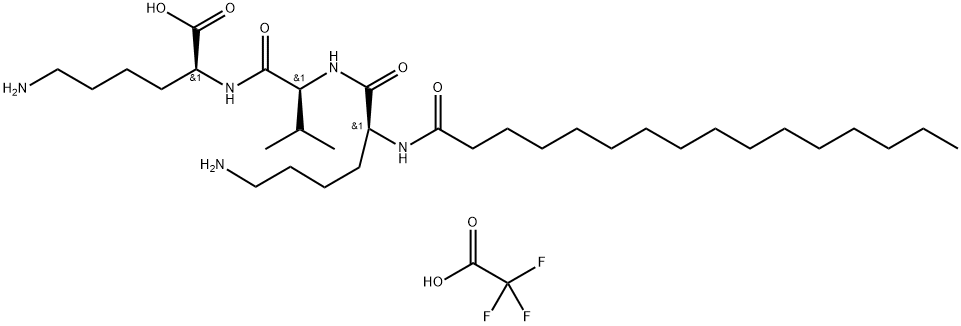
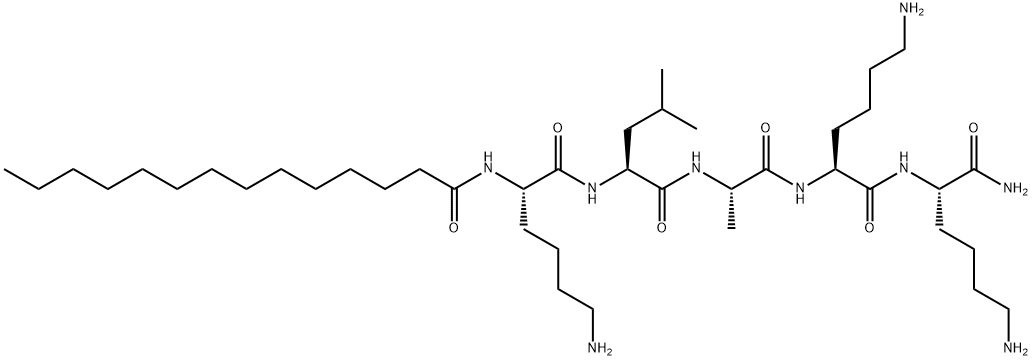

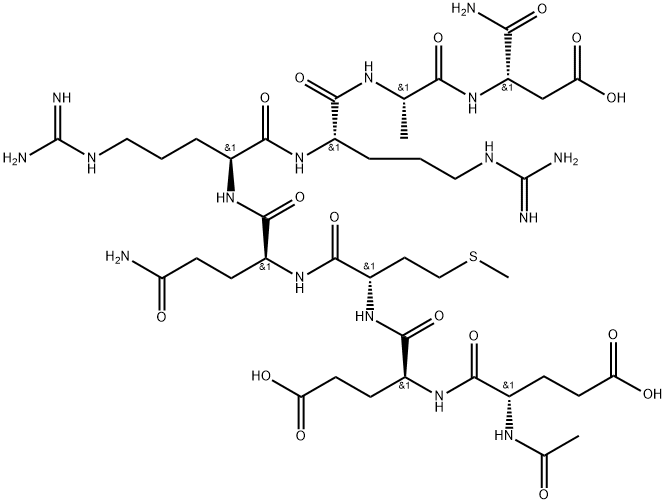
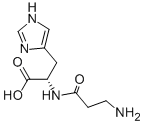
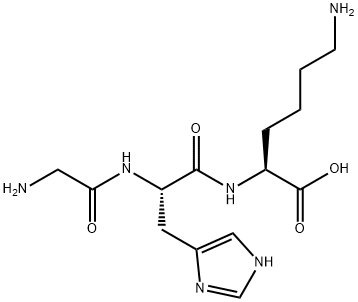
You may like
-
 Palmitoyl Tripeptide 1 PowderView Details
Palmitoyl Tripeptide 1 PowderView Details
147732-56-7 -
 Pyridine 99.5% HPLC /UV SpectroscopyView Details
Pyridine 99.5% HPLC /UV SpectroscopyView Details
110-86-1 -
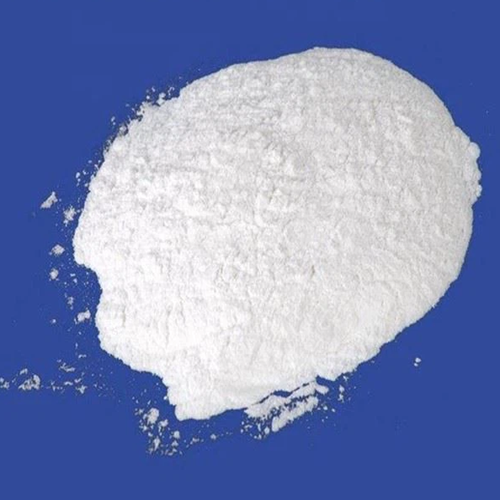 Guanine , 99%View Details
Guanine , 99%View Details
73-40-5 -
 Piperazine Spot supply, best priceView Details
Piperazine Spot supply, best priceView Details
110-85-0 -
 Dibutyl PhthalateView Details
Dibutyl PhthalateView Details
84-74-2 -
 Imidazole Spot supply, competitive priceView Details
Imidazole Spot supply, competitive priceView Details
288-32-4 -
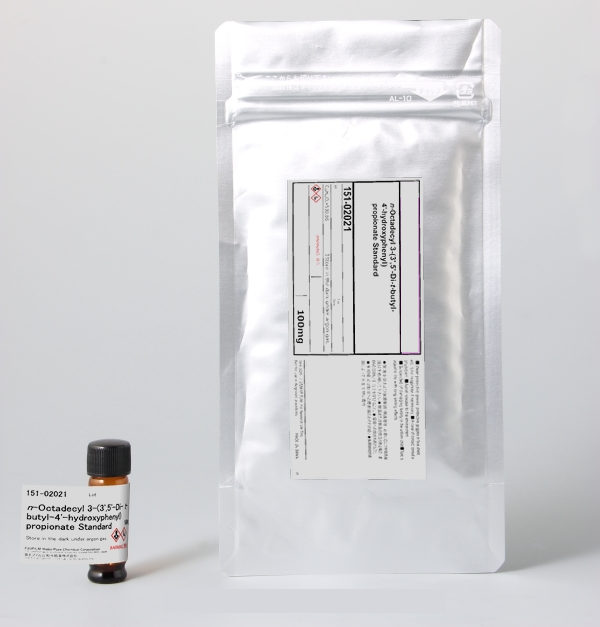 Octadecyl 3-(3,5-di-tert-butyl-4-hydroxyphenyl)propionate 98% (GC)View Details
Octadecyl 3-(3,5-di-tert-butyl-4-hydroxyphenyl)propionate 98% (GC)View Details
2082-79-3 -
 Thiourea 99% ARView Details
Thiourea 99% ARView Details
62-56-6
